
Important Notice for Existing and Potential Clients: As from 4th March 2013, Phil Lomax, Director and Principal Consultant of Green Dimensions is moving to take up a position as Principal Ecologist at Thomson Ecology. |
 |
 |
 |
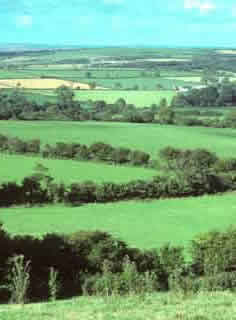 |
 |
 |
 |
 |
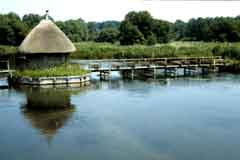 |
 |
 |
 |
 |
 |
 |
 |
Case Studies
Biodiversity Conservation Planning
A pilot version of the unique Biodiversity Planning Toolkit will be launched in summer 2010. The web site has been designed specifically to help planners and developers to achieve high quality sustainable developments that conserve and enhance biodiversity resources across the UK. Developed with the help of Green Dimensions, the toolkit will provide a one-stop-interactive shop for the planning community to help it navigate through relevant legislation and guidance and will lead to a better understanding and compliance with statutory requirements and Government policy in relation to biodiversity. The toolkit will highlight potential development impacts and provide an easily accessible means of managing the process to ensure such impacts are avoided or adequately compensated or mitigated, as well as encouraging enhancement. The toolkit will also lead to good practice and greater consideration of biodiversity in both forward planning and development control and management, as well as dove-tailing biodiversity with green infrastructure.
A web-based toolkit for planners and developers is urgently required. There is currently no single source of up to date information and guidance to support planners and developers in the vital task of conserving biodiversity and geodiversity in the UK. Government policy and advice in all four countries of the UK stresses the importance of conservation in spatial planning and development. Yet the information, knowledge and guidance to enable planners and developers to achieve these policy aims is difficult to access, scattered across a wide range of disparate sources, few of which are actually specifically geared to supporting planners and developers. At the same time, lack of knowledge and skills in the sector has been identified as a major reason why spatial plans and new developments are not delivering the hoped for national targets of halting biodiversity loss. Purpose of the Toolkit More specifically, the project will enable planners and developers to:
Development of the Toolkit ALGE, with support from Defra and Scottish Natural Heritage, and several other governmental, professional and specialist organisations*, employed consultant Mike Oxford to lead on the planning and design of the toolkit, supported by Phil Lomax of Green Dimensions and with graphics and web site realisation by Buffalo Design and Zoo Media. A working pilot of the toolkit is planned for launch by the end of June 2010 on http://www.biodiversityplanningtoolkit.com Further development of the toolkit to achieve its full potential will be dependent on generating additional financial support. If you would like to support the development of the toolkit, or you would like to be involved in testing the pilot toolkit or you would like further information, please contact either Mike Oxford michaeloxford@btinternet.com or Phil Lomax phil.lomax@green-dimensions.co.uk . * A number of interested stakeholders from Government, the planning community and the biodiversity conservation community have joined together to help deliver the toolkit: Association of Local Government Ecologists
“Any plan or project not directly connected with or necessary to the management of the site but likely to have a significant effect thereon, either individually or in combination with other plans and projects, shall be subject to appropriate assessment of its implications for the site in view of the site’s conservation objectives. In light of the conclusions of the assessment ………….the competent national authorities shall agree to the plan or project only after ascertaining that it will not adversely affect the integrity of the site concerned….” This requirement applies to the preparation of Local Development Frameworks by Local Planning Authorities, of which the Core Strategy is the key document setting out the preferred spatial planning options and development control policies from which all other plans and documents flow. The key to determining whether any plans could have an adverse effect on the integrity of a European site is the process of Appropriate Assessment (AA). The DCLG published guidance for the AA of Regional Spatial Strategies (RSS) and Local Development Documents (LDD) in August 2006. This guidance describes AA as a three step process: Step 1 – Determine the likely significant effects of the plan on the European sites. Step 2 – If there is a likely significant effect, then undertake a full Appropriate Assessment to ascertain the effects on the integrity of the European site in relation to the conservation objectives of the site. Step 3 – If an adverse effect is identified, then consideration needs to be given as to how the effect could be mitigated. TVBC carried out an initial screening of the Core Strategy Preferred Options in January 2008. In consultation with Natural England and the Environment Agency, the Screening Report considered the potential effects of the Core Strategy Preferred Options and Development Control policies on all European sites within the Test Valley Borough and up to 10km outside of the borough boundary. This identified 15 SACs, SPAs and Ramsar sites that may be affected. The initial screening assessment eliminated 10 of these and the green dimensions report focused on assessing the remaining 5 Natura 2000 sites in relation to key Core Strategy policies on housing development, commercial and industrial development. The 100 page Appropriate Assessment report concluded that there were no likely significant effects on the Emer Bog or Mottisfont Bats SACs. However, there remained uncertainties about the recreational impacts of new residential development on the New Forest and the impacts on water quality in the Solent and Southampton Water from the scale of proposed residential development in Andover, due to the capacity of the Fullerton Sewage Treatment Works on the River Test (a main tributary of Southampton Water).In discussions between Test Valley Borough Council and Natural England and the Environment Agency, it was agreed that the provision of an alternative countryside recreation site – a proposed new Forest Park in southern Test Valley – could mitigate the potential recreational impacts on the New Forest. Furthermore, limiting the number of new houses built in the Andover area to within the estimated capacity of the Fullerton STW would maintain current levels of water quality.
The 37 page assessment concluded that the proposed development of 1600 new houses was unlikely to have a significant effect on the Mottisfont Bats SAC because the site lay outside the 7.5 km bat foraging zone. It was unlikely to have a significant effect on the Solent Maritime SAC or the Solent and Southampton Water SPA/Ramsar, so long as the infrastructure and capacity of the Romsey Greenhill Sewage Treatment Works was increased to accommodate the additional waste water. Furthermore, it was unlikely to have a significant effect on the Emer Bog SAC or the New Forest SAC/SPA/Ramsar via additional recreational impacts so long as adequate public open space alternatives were provided for the new residents of the area. However the proposed development site is a ‘safeguarded’ minerals area, policies on which are ‘saved’ in the new Hampshire Minerals and Waste Core Strategy DPD, July 2007.Pending further investigations, there remained uncertainties over the likely significant effects of mineral extraction (and possible subsequent land filling to achieve a viable development platform) on the sensitive hydrology and water chemistry of the nearby Emer Bog SAC.
In support of the Council’s case for refusal, green dimensions presented the Inspector with the following evidence:
The appeal site consists of 2.48 ha of copse within the 600 acre Harewood Forest SINC. Harewood Forest is believed to be the second largest area of ancient woodland in the south of England and was mentioned in the 10th Century Saxon Chronicles as the Forest of Chute. 44 species of vascular plants indicative of ancient woodland have been recorded from within the site, as well as 11 different woodland stand types. The appeal focused on whether the creation and use of a recreational high ropes course within a copse that had been felled and re-planted with Douglas Fir, would have a harmful effect on the ecology of the SINC woodland, contrary to planning policy.
|
 |
 |
 |
 |
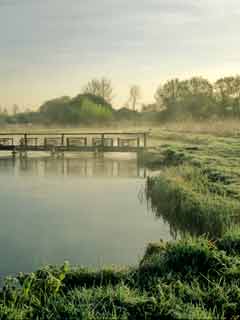 |
 |
 |
 |
 |
 |
 |
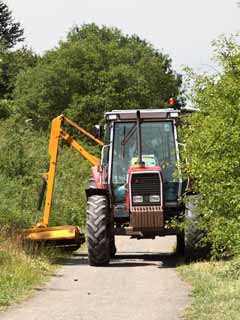 |
 |
 |
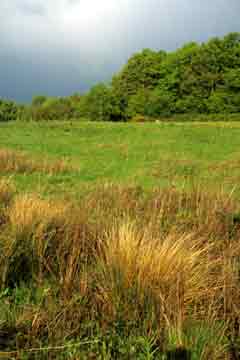 |
 |

Web Site Development and Wildlife Photography by Andrew Walmsley |
Copyright © 2008 Phil Lomax and Andrew Walmsley All rights reserved Copyright notice Terms and conditions |


